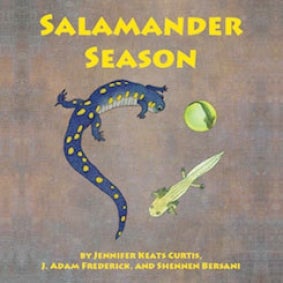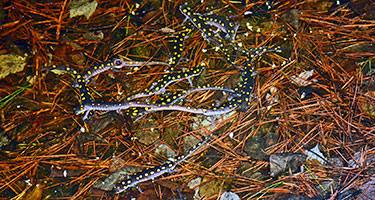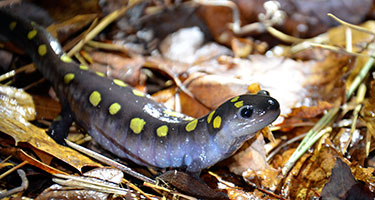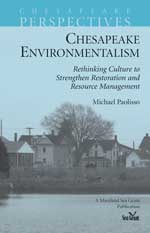Knauss legislative fellowships in Congress help build careers — and they're fun and educational. See our video and fact sheet for details.
National Contest Commends Children’s Science Book About Salamanders

A leading national scientific organization has recognized a children’s book about salamanders and environmental science co-written by J. Adam Frederick of Maryland Sea Grant.
The book, Salamander Season, was named a Commended Book in the Children’s Science Picture Book category in an annual competition, the AAAS/Subaru SB&F Prize for Excellence in Science Books. AAAS, the American Association for the Advancement of Science, is a cosponsor of the annual competition. A total of seven books received the honor.
Frederick is Maryland Sea Grant’s assistant director for education and works to support a variety of educational programs in environmental and marine science at public schools across Maryland. His co-author on Salamander Season was Jennifer Keats Curtis; the illustrator was Shennen Bersani.
The book describes the story of a young girl and her scientist father as they participate in a science project about spotted salamanders on a cold, rainy, spring night. They follow hundreds of the creatures as they venture into a vernal pool to mate and lay eggs. Together the father-child team studies the salamanders through their complete natural life cycle and amphibian metamorphosis, which culminates in late summer, the pools dry up and the adult salamanders return to the woods. Presented as a nature journal kept by the girl, the book includes easy-to-understand text, photographs, and drawings.
A concluding section of the book, "For Creative Minds," offers detailed information about the salamanders and the environmental biologists who study them.
|
|
 |
| Yellow-spotted salamanders migrate in springtime in search of vernal pools (temporary pools created by rainfall and snow melt) in which to mate and lay eggs. Credit: J. Adam Frederick |
Frederick, a former high school biology teacher, works for the University of Maryland Center for Environmental Sciences Institute of Marine and Environmental Technology in Baltimore as well as for Maryland Sea Grant. As part of his work, he studies salamanders and other aquatic organisms. He has developed lesson plans and practical applications for classroom teachers on a variety of topics; you can explore them on Maryland Sea Grant's website.
Frederick described how he came to co-write Salamander Season.
“The idea came about from my numerous treks to the Frederick Municipal Forest — both day and night for the last 20-plus years — and locating vernal pools where all the amphibious springtime magic happens,” he said. During this span, Frederick has observed annual salamander migrations and invited interested educators to observe them.
The species highlighted in the book is the yellow-spotted salamander (Ambystoma maculatum), which is found in the eastern United States from Maine to Georgia and in parts of the Midwest. The animals are difficult to see, however, as they are strictly nocturnal. After mating season, they spend most of their time underground in the quiet confines of small mammal burrows and tunnels.
In 2012, Frederick came across a journal article that suggested that the salamanders offered an opportunity to teach about an important theme in biology — symbiosis. The article described a symbiotic relationship between this species of salamander and a species of algae. The algae use the salamanders as hosts, and the growing salamanders benefit as the algae increase oxygen and provide nutrition from photosynthesis and may remove waste generated within salamander eggs.
After he shared the article with science education colleagues, “I realized that more than 90 percent of people I spoke with were completely unaware of this symbiotic relationship. I'm always looking for local examples and exciting contexts to convey ideas in environmental science. To me, this is far more interesting than the classic examples of symbiosis used in the classroom, like coral and algae.”
“The connection to Sea Grant,” Frederick said, “is that when people understand biodiversity within our watershed, they tend to care about and for our environment, from the mountains to the sea.”
Frederick has also written two curriculum-related books: Inside-Out — Environmental Science in the Classroom and the Field, Grades 3-8 and Saltwater Aquaria in the Classroom — A Manual for the Beginner as well as articles and book chapters to help science teachers in the classroom. Salamander Season is his first picture book.
For More Information
Maryland Department of Natural Resources, Discover Maryland’s Herps — a website about amphibians and reptiles that live in Maryland.
Kerney, Ryan. 2011. Symbioses between salamander embryos and green algae. Symbiosis 54.3: 107-17. link







